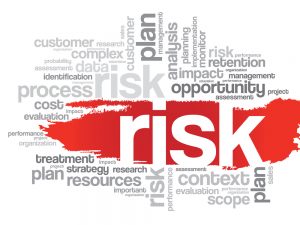In our last post, we shared how climate surveys are instrumental in reducing human capital risk. Human capital risk is broad, and depending on your strategic plan, you may want to narrow your focus. While we prefer to assess the organization as a whole, some organizations choose to focus on specific areas based on resources, time and budget. Regardless of your decision, there are nine categories that you should consider before you ask the first question in a climate survey.
Reducing Risk in Nine Core Organizational Areas
While every organization is unique, there are standard categories that you should consider including in your climate survey. Incorporating all of these categories into your survey provides a holistic view of the entire organization.
Management Values at Work
Management Values at Work provide insight into the priorities and importance placed on any given initiative or project. Specifically, they are a physical and behavioral representation of what the managers and leaders of the company see as important to success in the workplace.
Personal Values at Work
Personal Values at Work are an outward and behavioral representation of how the individuals in the company work and relate to one another. It illustrates the pride they take in their jobs and their team and is derived from an individual’s belief about what’s important.
Communication
Communication is the effectiveness in which critical ideas and information are dispersed throughout the company, the willingness of all individuals to interact openly, the processes of generating ideas, and improving processes through interaction.
Job Satisfaction
Job Satisfaction is a representation of a person’s contentment with their employment situation and is an excellent indicator of loyalty and employee longevity.
Compensation and Benefits
Compensation and Benefits show employee’s contentment with the financial and benefit status within the company. This section is a good indicator of the staff’s attitude about the employment competitiveness of the company.
Corporate Climate
The Corporate Climate is the tone which the company takes on as a result of the employee perceptions towards fairness and honesty as a whole. A strong corporate climate is an indicator of fairness and equality.
Corporate Stability
Corporate Stability is the perception of the longevity of the company. Strong perceptions in this area indicate a higher likelihood of employee motivation and loyalty.
Company Drive
The Company Drive is the intensity that the employees feel the company operates at in its pursuit of success.
Workforce Retention
Workforce Retention is the measure of the likelihood of employee attrition due to dissatisfaction.
As you work to reduce your risk, consider how each of the nine areas above impact each other. Will fixing one issue spur another? For example, will increasing the company drive leave employees feeling overworked and neglected? Consider the relationship each area has with the other as you begin your climate survey plan.
If you’d like assistance with your plan, we’d love to help. Give us a call today.

